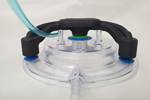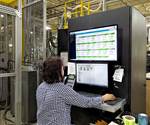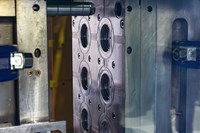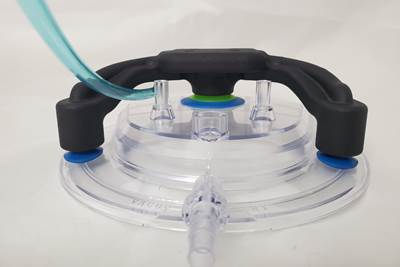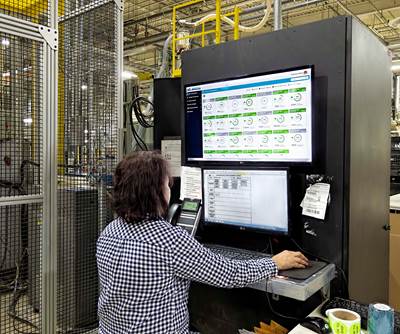Antimicrobial Based on Elemental Zinc Shown to be Effective Against Super-Resistant Fungus
Parx Materials’ Seniconcentrate technology now shown to be effective against super-resistant fungus by 87%.
We have previously reported on Dutch/Italian technology start-up and its patented Saniconcentrate antimicrobial based on elemental zinc which was first shown to allow plastics manufacturers to create self-sanitizing products with an antibacterial property of up to 99% within 24 hours, as determined according to ISO22196 with gram positive Staphylococcus aureus and gram negative Escherichia coli bacteria.
Saniconcentrate was touted as a breakthrough option for antimicrobials without biocides for applications like touch surfaces in public areas, medical devices or food contact applications. Moreover, last year this additives technology was shown to reduce Covid-19 virus without harmful toxins on surfaces by up to 99% in 24 hours. Now, the company says this technology has been shown to be 87% effective against super-resistant fungus, which is seen by some as the next global health threat.
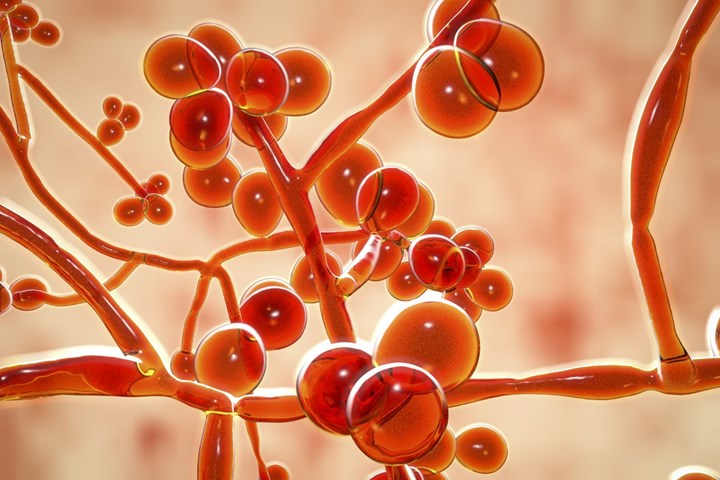
Candida auris is one example, as it is multidrug-resistant and can persist on surfaces, despite disinfection. Since it was first identified in Japan in 2009, cases of Candida auris have emerged across the world almost simultaneously. The super fungus has already been labelled a serious global health threat by national health protection agencies like the United States’ Centers for Disease Control and Prevention (CDC).
It has caused infections of wounds, ears and the bloodstream, and experts are uncertain whether it also causes infections in the lungs or bladder. Because Candida auris often doesn’t respond to anti-fungal drugs, 30% to 60% of patients infected with it will likely die—particularly if their immune systems have been compromised by other risk factors like Covid-19.
According to Parx Materials, Candida auris is made more dangerous by the fact it’s easily misidentified as another Candida strain, unless special tests are carried out in a laboratory. This creates the perfect circumstances for outbreaks in healthcare settings, such as hospitals or nursing homes. There have been several high-profile examples that have led to scores of infections.
Candida auris is spread from person-to-person, or through contact with contaminated surfaces. Examples of the latter include high-touch surfaces like bed rails, windowsills or shared mobile equipment like blood pressure cuffs, axillary thermometers or even nurses’ carts. It can also spread through invasive lines or tubes, like urinary catheters and tracheostomy tubes, which are often the point of entry into the patient’s body.
Not only is Candida auris easy to catch, it is also very hard to kill. Parx Materials notes that few products on the market have proven able to tackle the super fungus. As such, it lingers in hospital rooms, sinks and drains. In one case, a hospital even had to destroy its ceiling and floor tiles to get rid of a particularly nasty infection. The company’s Saniconcentrate is said to add an extra level of protection when regular practices aren’t enough--like cleaning and disinfection, rigorous handwashing and appropriate care of medical equipment and devices. The reduction in fungus made possible by the plastic additive may be the difference that’s needed to prevent Candida auris from forming a biofilm. Biofilm makes the fungus grow and multiply more quickly, and it becomes almost impossible to eradicate.
The additive is homogenously incorporated into plastics to create an immune system inherent to the material that doesn’t fade with time or use. The additive is also biocompatible, safe for use in the human body. Or it can be manufactured into a non-woven textile. Its applications include many of the areas where Candida auris is most likely to spread. This includes touch surfaces, invasive tubes or articles and personal protective equipment (PPE).
Related Content
ICIS Launches: Ask ICIS Generative AI Commodities Assistant
Said to be the first of its kind, this AI assistant will enhance access to ICIS’ intelligence and insights for the energy and chemical markets.
Read MoreTosaf’s Investments in North America Result in 40% Increase in Production Capacity
Backed by a global presence, Tosaf provides localized additive and color solutions, and services for the plastic industry in North America.
Read MoreAdditives Boast Sustainability Without Sacrificing Performance
Sustainability continues to dominate new additives technology, but upping performance is also evident. Most of the new additives have been targeted to commodity resins and particularly polyolefins.
Read MoreSI Group Gets FDA Approval Extension for Weston 705 & 705T
SI’s phosphite antioxidants get ‘green light’ for use in PET food-contact packaging
Read MoreRead Next
Beyond Prototypes: 8 Ways the Plastics Industry Is Using 3D Printing
Plastics processors are finding applications for 3D printing around the plant and across the supply chain. Here are 8 examples to look for at NPE2024.
Read MorePeople 4.0 – How to Get Buy-In from Your Staff for Industry 4.0 Systems
Implementing a production monitoring system as the foundation of a ‘smart factory’ is about integrating people with new technology as much as it is about integrating machines and computers. Here are tips from a company that has gone through the process.
Read MoreMaking the Circular Economy a Reality
Driven by brand owner demands and new worldwide legislation, the entire supply chain is working toward the shift to circularity, with some evidence the circular economy has already begun.
Read More
